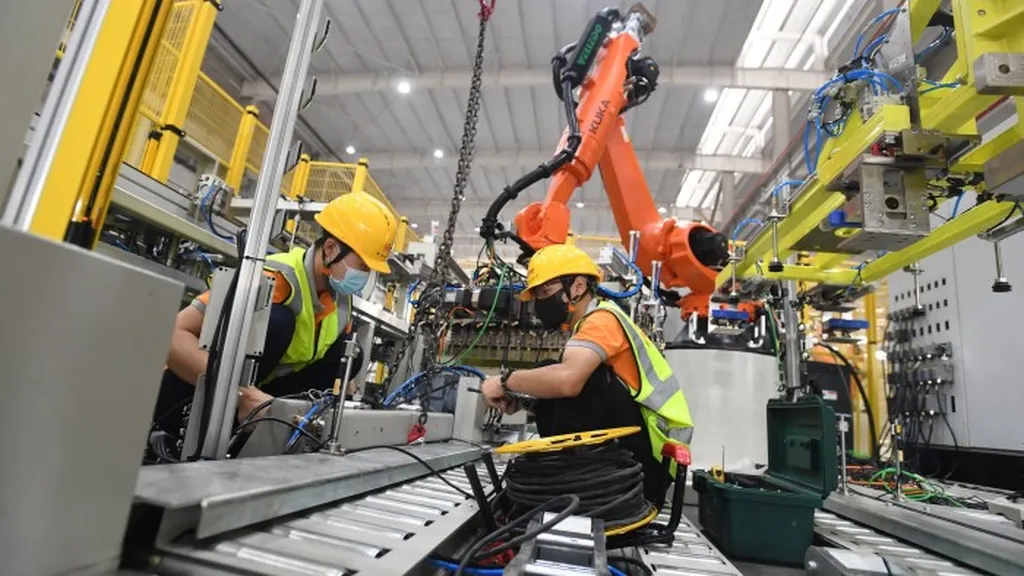The smart construction equipment market is on a trajectory of unprecedented growth, with projections indicating a surge from USD 24.4 billion in 2025 to USD 81.5 billion by 2035, reflecting a compound annual growth rate (CAGR) of 12.8%. This expansion is not merely a numerical trend but a testament to the industry’s shift towards automation, sustainability, and digital integration. The market’s first five years, from 2020 to 2025, have already witnessed a significant expansion, with the market value growing from USD 13.4 billion to USD 21.7 billion. This period has been characterized by a surge in the adoption of automation, telematics, and Internet of Things (IoT) technologies, particularly in emerging economies where infrastructure development is intensifying. The steady gains in annual market values, including USD 15.1 billion in 2021 and USD 19.2 billion in 2024, underscore ongoing efficiency improvements and a regulatory focus on safety and environmental standards.
From 2026 to 2035, the market is expected to accelerate considerably, adding USD 59.8 billion. This surge is propelled by advancements in artificial intelligence, machine learning, and sensor integration, which enhance equipment performance while lowering operational costs and project durations. The introduction of connected and autonomous equipment, which minimizes human intervention, addresses rising demands for productivity and workforce safety. Further momentum is derived from digital twin technology and predictive maintenance, enabling smarter asset management. The ongoing transition toward sustainable construction methods and the electrification of machinery also stimulate innovation and investment.
The market’s trajectory signals strong and sustained expansion, supported by technological adoption, infrastructure investments, and evolving regulatory frameworks. The leading segment in the smart construction equipment market in 2025 is expected to be earthmoving and road-building equipment, accounting for 39.0% of total market revenue. This dominance is driven by high utilization across infrastructure, highway expansion, and urban construction projects. The integration of sensors, GPS tracking, and automated controls in excavators, bulldozers, and graders is improving precision and safety on job sites. These machines are critical for foundational tasks, and their automation-readiness makes them ideal candidates for smart upgrades. Increased investment in transportation infrastructure globally ensures consistent demand for this equipment category.
IoT technology is projected to hold a 34.00% market share in 2025, establishing it as the leading technology within smart construction equipment. IoT enables remote monitoring, fault detection, and asset management through real-time data exchange between machines and centralized systems. This results in improved fleet utilization, reduced maintenance costs, and enhanced decision-making for contractors. Adoption of IoT is being driven by the need for uptime visibility and operational transparency. As 5G connectivity and cloud infrastructure expand, the deployment of IoT-powered systems is expected to grow across small and large-scale construction projects.
Semi-autonomous systems are anticipated to dominate with a 61.00% share of the market in 2025. These systems offer a balanced approach—leveraging automation for efficiency and safety while retaining operator control when needed. Semi-autonomous equipment is gaining traction due to its cost-effectiveness, faster training cycles, and easier integration into existing fleets. Applications include auto-grading, assisted steering, and collision avoidance systems. Their compatibility with current job-site conditions and reduced dependence on skilled labor make them a preferred choice for contractors transitioning toward full automation in phases.
The smart construction equipment market is advancing rapidly due to rising infrastructure development, labor shortages, and the growing need for project efficiency and safety. Integration of digital technologies into construction machinery is helping contractors reduce downtime, monitor real-time performance, and improve fuel efficiency. Government initiatives promoting smart cities and automation-friendly policies are further pushing adoption of intelligent machinery across developed and emerging economies. Additionally, the availability of telematics, predictive maintenance systems, and remote diagnostics is transforming operational workflows. Demand is also being fueled by sustainability efforts, as smart equipment contributes to reduced emissions and optimized resource usage.
The smart construction equipment market is segmented by equipment category, technology, level of automation, application, end-user, and geographic regions. The market is divided into earthmoving and road-building equipment, material handling and cranes, concrete equipment, and crushing and screening equipment. In terms of technology, the market is classified into IoT, automation and robotics, AI and machine learning, and GPS. Based on the level of automation, the market is segmented into semi-autonomous and fully autonomous. The application of the market is segmented into residential construction, commercial construction, mining and quarrying, and industrial construction. The end-user of the market is segmented into construction companies, government agencies, rental companies,

